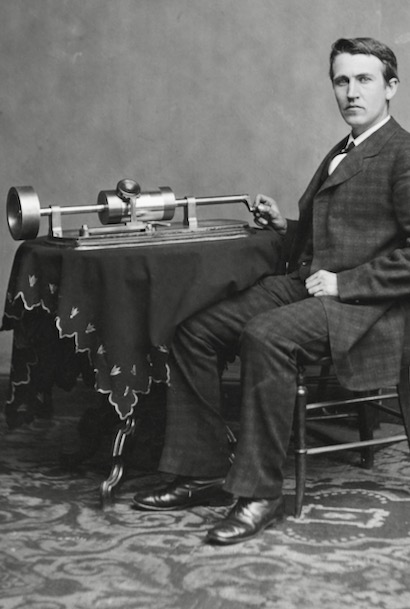Publishing Trends: Edison’s Dream Becoming a Reality as Millions of Americans Enjoy Audiobooks
Since Thomas Edison first appeared in Scientific American magazine in , demonstrating a mechanical process that he said could permanently preserve and replay sounds—publishers have dreamed of making books as easy to hear as they are to read.

Mary had a little lamb.Soon, he boasted that entire works of literature would be available in audio. However, technology and motivation took half a century before the huge number of blind World War I veterans finally led to a greater investment of recorded books in the form of cumbersome recorded discs. For decades, this remained an idea largely provided for the visually impaired. Welsh poet Dylan Thomas is credited with launching the modern market for audio books with his recording of A Child’s Christmas in Wales. (Rutgers has the original Scientific American article about Edison. And, Smithsonian magazine has more about Thomas’s recording.)
We finally are nearing that historic inflection point, 142 years after Edison’s boast. Audiobooks are on the verge of a massive surge in popularity and accessibility, both for readers and authors. That was the new consensus at the annual Ingram Lightning Source conference of independent publishers. (Susan Stitt reported more about that conference last week.)
Here are just some of the signs Ingram’s experts cited at the conference:
- 50% of Americans have listened to an audiobook
- People who enjoy audiobooks listen to an average of six to eight every year
- 55% percent of audiobook listeners are younger than 45 years old
- Audiobook sales are growing: 44.5% more money was spent on audiobooks in the U.S. in than in
- 56% of audiobook listeners view audiobooks as a way to engage with more content, not as a replacement for reading
Audiobooks are popular in part due to their flexibility and hands-free listening capability. That’s supported by stats, too: almost as many people listen to an audiobook during their commute (41% of listeners) as at home (45% of listeners).
Audible.com, owned by Amazon.com, is one of the biggest sources of audiobooks in the U.S., as well as a leader in developing emerging technologies for the format. For example, Whispersync technology allows readers to switch seamlessly between their Kindle and audiobook. That means you can read Our Muslim Neighbors by Victor Begg at home on your device, then switch to the audiobook during your commute without losing your place.
Audiobook Obstacles For Publishers
Despite the popularity of the format, many publishers currently face a significant obstacle when trying to break into the market: the price of production. A professionally produced audiobook can cost up to $500 – $1,000 per finished audio . With many books taking at least to narrate, that’s a significant investment. Audible.com partner ACX.com, a platform for audiobook development, does offer publishers and authors a way around a lump-sum production investment by connecting eligible content owners with audio editors and voice actors that are willing to work for a share of royalties. However, this method reduces a content owner’s oversight over the process and quality of the final product, as well as significantly reduces the author royalties generated by the audiobook.
Looking Forward: Text-to-Speech Technology
The biggest revolution in audiobook production is just on the horizon. Text-to-speech technology is predicted to significantly improve over the next several years, which would drastically reduce the production costs for nonfiction audiobooks. In addition, improved text-to-speech technology would result in many more books becoming ADA-compliant, meaning they would be accessible for Americans with disabilities when compliant eBooks are turned into audio versions without the associated high production cost.
This transition would result in audiobooks becoming an expected format for nonfiction books, like eBooks are now. Publishing in all formats is vital for the success of a new book, and audio should be no exception.
Upcoming text-to-speech improvements are not predicted to be a scalable solution for fiction audiobooks, as the nuance required for extensive dialogue will likely require human assistance to convey the appropriate emotions.
However, if you’re a nonfiction publisher or author who has been hesitating to invest start-up funds for audiobook production, consider waiting for these scalable audiobook production tools to become accessible to you.